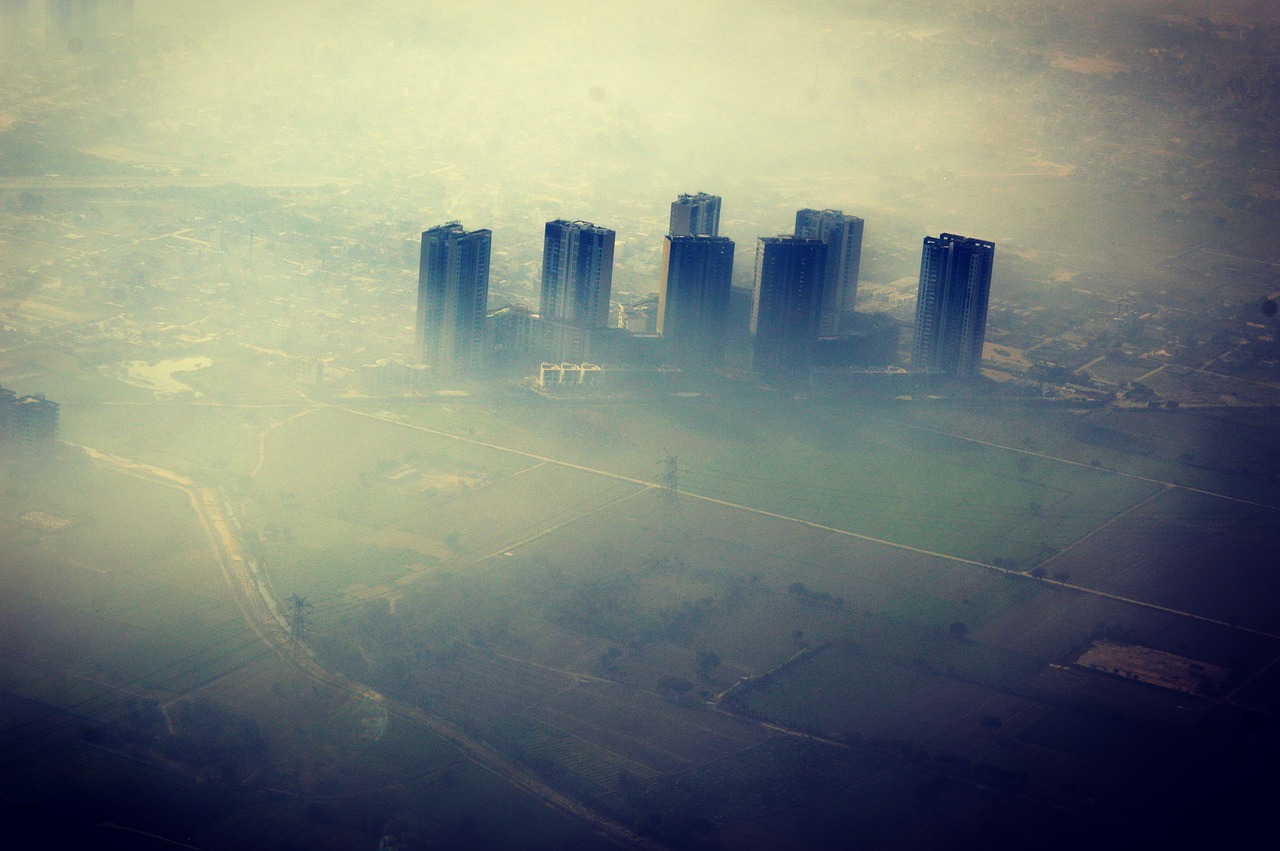India Staff Correspondent Sambhav Sharma and India Chief Correspondent Neelabh Bist offer their perspective on an action in the Supreme Court of India calling on the Indian government to immediately address severe air quality problems in the country’s National Capital Region. They file this for JURIST from New Delhi.
Every year the period around the festival of Diwali in India becomes a living hell for the people of the National Capital Region (NCR) of Delhi as the air quality level of the region breaks all safety parameters. It reads on the upper end of the ‘severe’ category, with extremely high PM 2.5 and PM 10 levels (pollutants responsible for permanent lung damage). The primary reasons for the hazardous air in Delhi are stubble burning by the farmers of the nearby states of Punjab and Haryana during the season, firecracker usage during Diwali, vehicular emissions and industrial pollution. In addition to that, meteorological conditions like the northwesterly winds and low wind speed in the capital region act as favorable conditions for transport of pollutants.
On Friday the Air Quality Index (AQI) level reached its highest this season at 471 (less than 100 is considered as satisfactory) more than a week after Diwali, which raised serious concerns amongst the public, administration and the judiciary in the NCR.
The deteriorating air quality led to the formation of a special bench of the Supreme Court on Saturday, comprising Chief Justice NV Ramana, Justice DY Chandrachud and Justice Surya Kant. The bench heard the plea of a 17-year old Delhi student, Aditya Dubey (Aditya Dubey v. Union of India) seeking directions to provide free of cost stubble removing machines to small and marginal farmers. During the hearing, the bench expressed serious concerns about the deteriorating air quality in the NCR. The Chief Justice even remarked that poor air quality is compelling people to even wear masks inside their own homes.
Mr. Tushar Mehta, the Solicitor General (SG) representing the Central Government in court, was asked for suggestions to immediately improve the Air Quality Index (AQI). The Apex Court pulled up the Government for an Air Emergency Plan. The Chief Justice expressed in unequivocal terms that if the air quality remains severely hazardous, the Government will have to think of solutions on the lines of a lockdown of the NCR.
As stubble burning by the farmers of adjacent states of Punjab and Haryana is considered as the most significant factor for damaging air quality in the Delhi region during this season, the Special Bench asked the Central and the concerned State Governments about the incentives given to farmers to control this practice. The Court asked for details regarding the supply of ‘Happy Seeder’ machines to the farmers to curb pollution through stubble burning. It observed that despite subsidies, many farmers are not able to buy these machines. The Bench also suggested that the farmers of these states be asked to postpone stubble burning for a few days.
The Supreme Court also came down heavily on the Delhi State Government for opening schools and thus exposing children’s lungs and life to grave pollutants. Following the observations made by the Court, the Delhi Government announced a shutdown of the schools in Delhi for a week in addition to suspending all construction activities in the region and ordering government officials to operate from home.
The matter is now adjourned until Monday, and the SG has been asked to apprise the Court of the emergency steps taken at the meeting of the Chief Secretaries of different states and the measures implemented by the Government or an immediate refuge from the degraded air.
The rising pollution in Delhi NCR is a recurring matter of grave concern. It violates the fundamental right to a quality life and the right to a healthy environment enshrined under Article 21 of the Indian Constitution. Government inaction has resulted in breathless citizens gasping for air, literally. It seems like the governments have given up on the idea of providing safe breathable air, the most basic yet crucial requirement for a healthy life. Recently, people could be seen practicing rituals for celebrating the festival of Chhath, by diving in the toxic Yamuna river that runs through the National Capital. The horrific sight of people swimming in the poisonous white foam that has blanketed the ‘holy’ river serves as the perfect representation of the deplorable state of affairs in the NCR. Every year the government claims to initiate cleaning drives for the river, only to be revisited by the hazardous spume during this season.
The makeshift remedies suggested by the Government and the authorities are not the solution to this long-term battle the city is fighting. If not nipped in the bud, this yearly problem can actually be the beginning of a tragedy in waiting. Experts are now suggesting the need for an ‘integrated, local and multi-sector plan with a stringent compliance strategy for the NCR and the neighboring regions’. It is only hoped that effective dialogue between the judiciary and the government on Monday brings in a new ray of hope for the cloudy future otherwise in store for India’s capital city.


